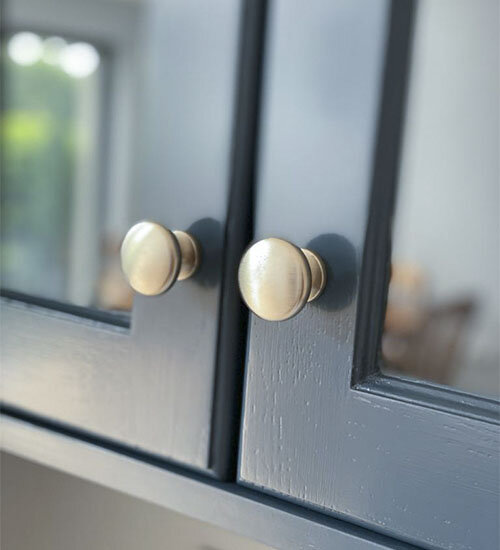Hand Painting Kitchens for Wales Against Ireland
I admire anyone who has a go at something themselves. I honestly do. Even if it’s painting their own kitchen cabinets and units. Actually… especially if it’s painting their own kitchen cabinets and units. I know how demanding that can be. And, between you and me, if you don’t know what you’re doing, it can go wrong quickly. A bit like flying an aeroplane.
Someone’s ambition to paint their own kitchen is similar to my dream to play rugby for Wales in a Six Nations decider.
The key points:
I am keen. (Most DIYers are too.)
I know the rules. (DIYers have manuals and YouTube videos.)
I am Welsh. (Less relevant for hand painting kitchens, perhaps.)
These are all things that are needed. What I perhaps lack is a little bit of experience of rugby at elite international level. However, I can bring my own jersey (1999 World Cup edition). I have said as much to the Welsh Rugby Union, but haven’t yet heard back from them. I think they are waiting to see who is fit after Covid-19 before making any final selection decisions.
Imagine, for a moment, I were actually picked. The commentary would go like this:
“Welcome to Cardiff, where Ireland are about to get us underway in front of a sell-out crowd. There goes the ball into the Welsh half and underneath it is young Lee Reeve, earning his first cap for Wales at the age of forty-something. He catches the ball… Oh! He’s dropped it! It’s bouncing around. Tackles are going in, but the ball is still loose! Reeve comes away with it! He’s off down the field! The other players can only watch in amazement! He’s under the posts and grounds the ball! … Well, I’ve never seen anything like that in all my years of commentating! Utterly astonishing! It’s the first time I’ve ever seen a player run half the length of the pitch to ground the ball under his own posts! … Somebody should really tell him to stop celebrating.”
All of which is a very elaborate way of saying it’s not always a good idea to have a go yourself. And when it comes to kitchens, there are some gotchas many people simply wouldn’t think of. They can have expensive consequences.
Before I go any further, let me be clear. It isn’t my intention to criticise anyone for doing something themselves. I genuinely think it’s a noble thing to get stuck in—within reason. Open-heart surgery and, yes, international-level rugby are best left to experts. But it would be unreasonable of me to suggest nobody should paint their own kitchen cabinets.
That said, I recently completed a rescue job on a DIY-painted kitchen. A lovely client who, faced with a lengthy spell at home (we can all relate to that), decided he would use the time to paint his kitchen. Unfortunately, it didn’t go to plan. The result was a finish he wasn’t pleased with, by his own admission, as well as paint that didn’t seem to want to cure properly. It was soft and brittle.
Now, I can’t tell you all the tricks of the trade. When it comes to our work secrets, hand painters of kitchens make magicians look like complete blabbermouths by comparison. (Oddly, though, once you start down the road of hand painting kitchens, you’ll find kitchen painters are a tribe that embraces you quickly and warmly. I myself have benefited hugely from the experience and knowledge of my colleagues—given freely and with enthusiasm; received by me with undying gratitude.)
I will tell you this, though. If you find that paint isn’t sticking to a surface or curing properly, it’s very likely a problem with your undercoat. You may also find that your paint is too thick. Many, if not most …. actually, if not all, professional painters will thin their paint for the undercoat(s), rather than using it straight out of the tin. This is particularly necessary when you need an undercoat to seep into a material—wood in particular. It makes for a better substrate for the topcoats to stick to.
In the end, it cost my client more money to paint his own kitchen units and doors. On top of the money he spent himself on paints and materials, I had to charge him the same as I would have if I’d painted the kitchen from scratch. In fact, because I had to strip off all of the faulty paint too (a disaster of a job), I should have charged more. But I figured, when you’ve already grounded the ball under your own posts, you deserve a break.
Before
During
After



